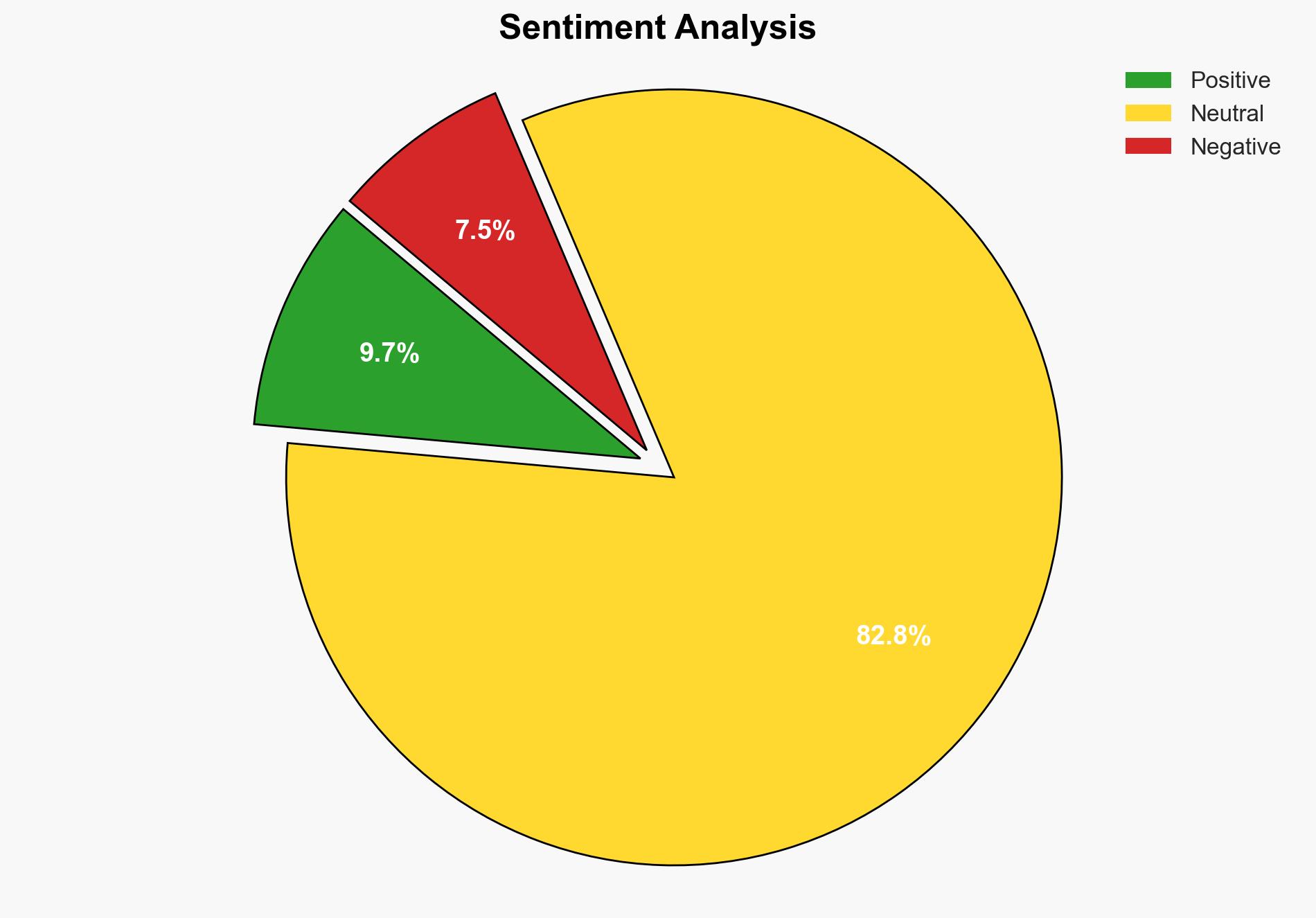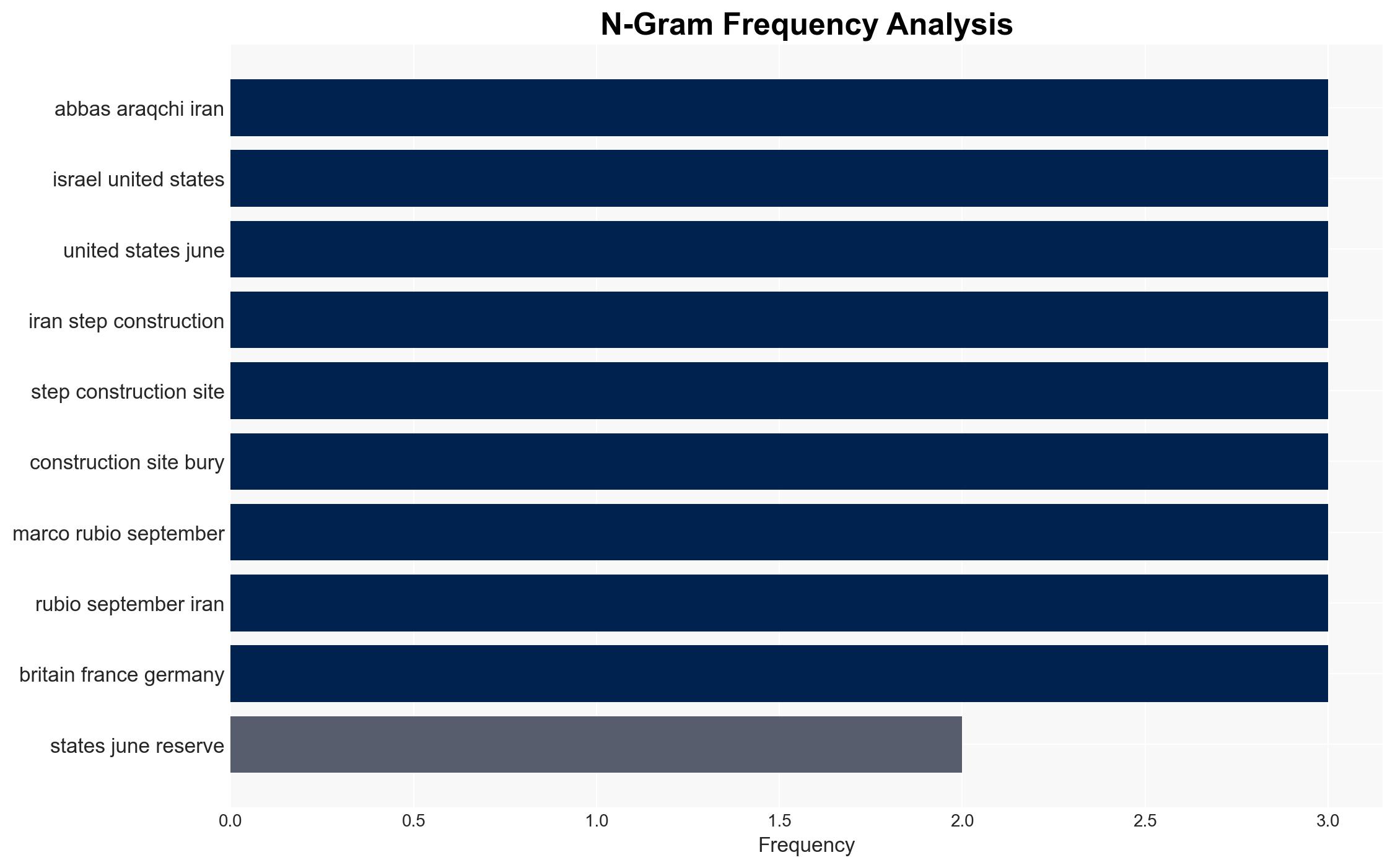Iran Claims It’s Not Enriching Uranium After US Israeli Strikes – Globalsecurity.org
Published on: 2025-11-17
AI-powered OSINT brief from verified open sources. Automated NLP signal extraction with human verification. See our Methodology and Why WorldWideWatchers.
Intelligence Report:
1. BLUF (Bottom Line Up Front)
Given the recent claims by Iran regarding its uranium enrichment activities post-US and Israeli strikes, the most supported hypothesis is that Iran is strategically obfuscating its nuclear capabilities to maintain leverage in international negotiations. Confidence in this assessment is moderate due to limited verifiable evidence and potential Iranian strategic deception. Recommended actions include increased intelligence collection efforts on Iran’s nuclear facilities and diplomatic engagement to clarify Iran’s intentions.
2. Competing Hypotheses
Hypothesis 1: Iran is genuinely not enriching uranium beyond civilian purposes and is transparent about its nuclear activities. This hypothesis is less likely due to historical precedents of Iran’s opacity in nuclear dealings and the strategic advantage gained from maintaining ambiguity.
Hypothesis 2: Iran is engaging in strategic deception, maintaining a facade of compliance while covertly advancing its nuclear capabilities. This is supported by Iran’s history of nuclear opacity, recent construction activities at nuclear sites, and the geopolitical context of leveraging nuclear capabilities for negotiation power.
3. Key Assumptions and Red Flags
Assumptions: Iran seeks to maintain strategic ambiguity to enhance its negotiating position. The international community, particularly the IAEA, lacks full access to Iran’s nuclear sites.
Red Flags: Iran’s inconsistent statements about its nuclear activities and the construction of facilities in mountainous regions suggest potential concealment efforts. The timing of Iran’s statements post-strike raises questions about their strategic intent.
4. Implications and Strategic Risks
The potential for escalation exists if Iran’s nuclear activities are perceived as a threat by regional actors, leading to increased military tensions. Economically, renewed sanctions could further isolate Iran, impacting global oil markets. Politically, Iran’s actions could undermine diplomatic efforts and exacerbate regional instability.
5. Recommendations and Outlook
- Enhance surveillance and intelligence-gathering on Iran’s nuclear sites to verify claims.
- Engage in diplomatic dialogue with Iran to encourage transparency and compliance with international norms.
- Best-case scenario: Iran agrees to renewed negotiations and transparency measures, reducing regional tensions.
- Worst-case scenario: Iran advances its nuclear capabilities covertly, leading to potential military conflict.
- Most-likely scenario: Continued strategic ambiguity by Iran, with periodic diplomatic engagements and regional tensions.
6. Key Individuals and Entities
Abbas Araqchi (Iranian Foreign Minister), Joseph Rodgers (CSIS Project on Nuclear Issues), Marco Rubio (US Secretary of State)
7. Thematic Tags
Regional Focus, Middle East, Nuclear Proliferation, Iran, US-Israel Relations, International Diplomacy
Structured Analytic Techniques Applied
- Causal Layered Analysis (CLA): Analyze events across surface happenings, systems, worldviews, and myths.
- Cross-Impact Simulation: Model ripple effects across neighboring states, conflicts, or economic dependencies.
- Scenario Generation: Explore divergent futures under varying assumptions to identify plausible paths.
Explore more:
Regional Focus Briefs ·
Daily Summary ·
Support us
·





